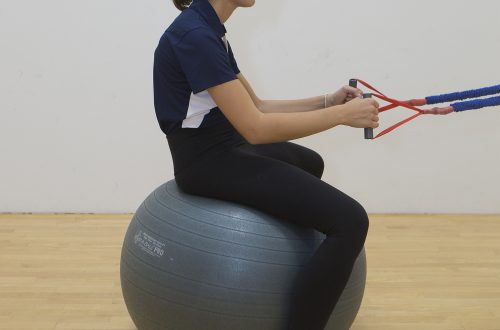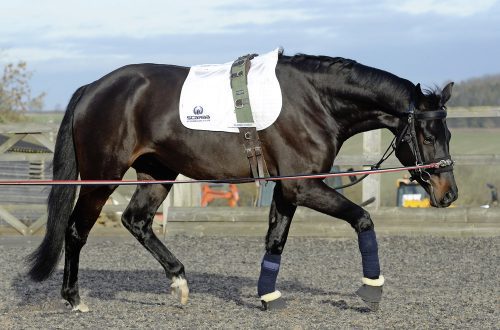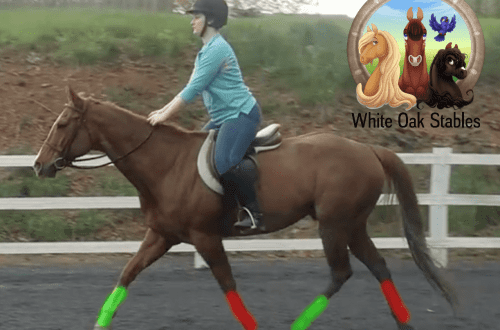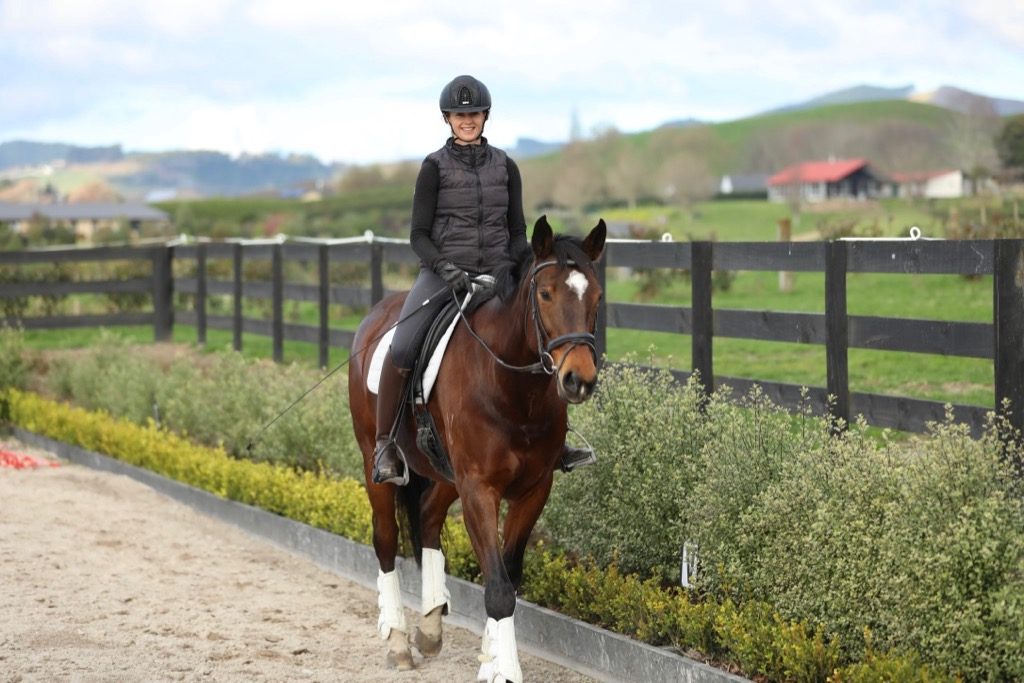
Relaxing the rider – games of body and mind
Relaxing the rider – games of body and mind
“Drop the reason. Trust me, DO IT!” I pleaded with my student, a fairly experienced rider who was riding an English thoroughbred gelding 175 cm at the withers, who had a reputation for being a very sensitive horse.
It was her first training on this horse, and, as it turned out later, the girl was frightened by information about the behavior of the horse and its size.
The rider held her breath. She held the reins in a death grip, tensing her shoulders and forearms. Her tight sluice, stiffened hip joints and “dead” lower back, of course, added to the horse’s discomfort. Trying to somehow get away from him, the gelding raised his neck, failed his back and began to “stargaze”, furiously creaking with a snaffle. Leaving behind the reins, he became less receptive to the rider’s controls, which, of course, increased her tension even more.
I always try to give experienced students time to solve the problem on their own. This time, my approach clearly didn’t work. I tried to talk to the rider about how her tight joints and shallow breathing had affected the horse, but nothing changed—there was an unfortunate couple in front of me—a frightened rider and a disgruntled horse. Since I trusted the gelding and knew that releasing the pressure would not induce him to run or run, I simply gave the COMMAND: “Drop the reason. Trust me, DO IT!”
The horse has been a great teacher. As soon as the rider gave the reins to the maximum, the gelding immediately lowered his head, exhaled with noise through his nostrils, stretched his back and began to move with a rhythmic, unhurried step. His generous response was an important lesson for the rider, who, despite her experience, was waiting for what “could” happen instead of working with what “happened” trying to figure out why.
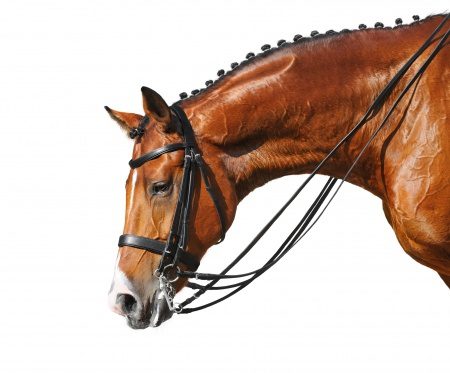
I have described this case because it is a classic example of showing us that relaxation is not only a physical but also a mental game. Relaxation is at the heart of everything we do with a horse on the ground or in the saddle. Without relaxation, things go badly at best, and downright awful at worst. We know that the rider’s psychological stress is the cause of the horse’s physical stress, and that pain is a hindrance to the horse’s psychological relaxation. I want to talk about relaxation a little more because it’s a very complex thing.
Emotional or physical reasons?
Rider muscle tension can be emotional or physical. An anxious, frightened, frustrated or angry rider holds his breath, tightens his muscles and stiffens his joints. Riders whose fitness, balance, and joint flexibility prevent them from following the horse’s movements tense and tighten their muscles and joints to compensate. In either case, the tension is transferred from the rider to the horse.
Muscle tension tends to affect the emotional state of the horse and put its flight instincts and attack/resistance instincts into alert mode. It doesn’t matter if the tension is caused by the rider, or muscle contraction due to cold weather or wind, or a rustling package that just caught the horse’s attention, muscle tension screams “Run!” rather than advises “Relax … »
However, there are horses who will show the opposite reaction. They mirror the rider’s muscle tension by tensing their muscles and joints to a halt. In any case, the good news is that just as a tense rider creates a tense horse, a relaxed rider can make a horse relaxed.
It doesn’t matter what came first, whether the horse’s tension caused tension in the rider’s body, or vice versa. In either case, a vicious feedback loop is created that will never lead to good results. Someone has to decide to break it. Experienced training horses take on this role when dealing with novice riders – they remain relaxed despite all the mistakes they make. And they deserve great respect for this! However, most horses are not like that. When riders gain experience and begin to ride different types of horses, the responsibility for creating and maintaining overall relaxation falls on their shoulders and must be understood and accepted!
Physical reasons
Riders often tense their muscles to compensate for their lack of balance, fitness, or flexibility. Strong, elastic muscles are needed to support the rider without forcing him to cling to the horse or apply excessive pressure. Riders with weak muscles and poor balance hang on the reins for support, stiffen the elbows, grip the horse with the sluice, leg locks, stiffen the lower back, and have difficulty maintaining balance above the horse’s center of gravity, leaning forward or backward. To ride a horse completely physically relaxed, the rider also needs good balance and the ability to follow the horse’s movements at every gait. Putting all these physical elements together, we get what is called an independent fit.
When we say that relaxation is at the heart of our riding tree, it can seem contradictory, because we often require skills that seem much more serious. But we need to rethink riding as a spiral learning process, not just a linear one. First, the rider masters and improves such a skill as working in a circle at a walk. Then he masters it at a trot, then at a canter. At each stage, the rider revisits what he already knows, adding something new. As the rider constantly revises and adds, he gradually moves up the riding tree. Thus, the basic level of relaxation that a rider achieves in the beginning lessons will improve as his balance improves. It is easier to stay relaxed when the rider can follow the horse’s movements at the walk, then at the trot and then at the canter. And when the rider develops an independent seat, it becomes easier for him to achieve relaxation and maintain it even under more difficult circumstances that present him with both psychological and physical challenges.
Emotional causes
Even experienced riders with a perfectly independent seat experience anxiety when dealing with a shy, impulsive or “hot” horse whose characteristics make it difficult to remain relaxed and focused at work. Riders working on young, sensitive or “hot” horses should keep their thoughts away from “what if” scenarios. Focusing on the “future possible fear” creates tension in the rider’s body that creates or feeds the horse’s tension. Instead, you need to learn to focus on the present moment, on what is happening here and now. You should work with the horse step by step, not expecting trouble in the future. As my trainer always told me, “WALK every step.”
Watching a confident, competent rider working with an emotionally difficult horse in a difficult situation can be a revelation. The rider does almost nothing. He or she is so focused on the horse that they won’t even notice if a “horse-eater” suddenly pops up or some other circumstance arises that can increase the horse’s arousal level. The rider simply continues to move forward without changing the rhythm and using the controls, quietly reminding the horse to pay attention to this step, then the next, and the next, and so on, without straining or changing the rhythm of the breath.
If the rider feels like he is tensing or clinging to the horse with his legs to keep his balance, or unable to soften his lower back to accompany the horse’s canter, he needs to work on his fitness, balance and body awareness both on the ground and in the saddle. If the fear of “what if…” appears while riding, the rider needs to mentally erase it from their mind and replace the picture with relaxation, become the relaxed and focused rider that we talked about. We know that horses mirror any tension in the rider’s body. We must also trust that they will also easily reflect our relaxation.
Nancy Vesolek-Sterrett (source); translation by Valeria Smirnova.



